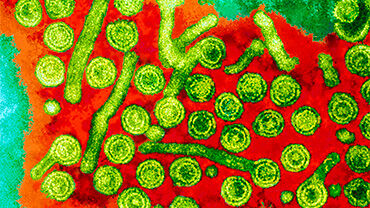Prevention of hepatitis B and C in the EU/EEA, 2024
The decline in the reported number of new transmissions of hepatitis B virus (HBV) and hepatitis C virus (HCV) infections across European Union (EU) and European Economic Area (EEA) countries has continued, but the burden remains high, with an estimated 5.4 million people with chronic HBV and HCV infection in the region.
Executive Summary
- There are gaps in the data available on hepatitis prevention activities across the EU/EEA, highlighting the need for countries to prioritise the collection of more complete monitoring data to properly assess progress towards the elimination targets.
- Available data show that progress across the EU/EEA region is variable, with many countries currently not meeting 2025 interim WHO European Action Plan hepatitis prevention targets, especially targets focussing on programmes for people who inject drugs (PWIDs). Continued investment and strengthening of hepatitis prevention programmes is needed.
- The hepatitis B vaccine is an important tool for hepatitis B prevention, but less than 40% of EU/EEA countries with a universal childhood vaccination programme have reached the target of 95% hepatitis B vaccination coverage.
- Countries employ different approaches to help prevent vertical transmission of hepatitis B, including antenatal screening and HBV vaccine birth doses. Data on coverage of these programmes are limited, however they do indicate that most reporting countries achieved the targets for coverage of antenatal screening and hepatitis B vaccine birth dose.
- Data on hepatitis B vaccination programmes aimed at healthcare workers, people in prison and PWID are limited. Available data suggest that countries should expand their adult hepatitis B vaccination coverage, especially for populations at risk.
- While all EU/EEA countries screen blood donations for HBV and HCV, only 14 countries reported screening 100% of blood donations for HBV and HCV using nucleic acid testing (NAT).
- Sterile needle and syringe distribution and opioid agonist treatment (OAT) are effective ways of reducing the transmission of hepatitis B and C. However, although data are lacking from many countries, only four have reached the targets for both of these programmes, suggesting a significant need to strengthen harm reduction programmes focussing on PWID.
Download

Prevention of hepatitis B and C in the EU/EEA
- EN - [PDF-1.29 MB]







